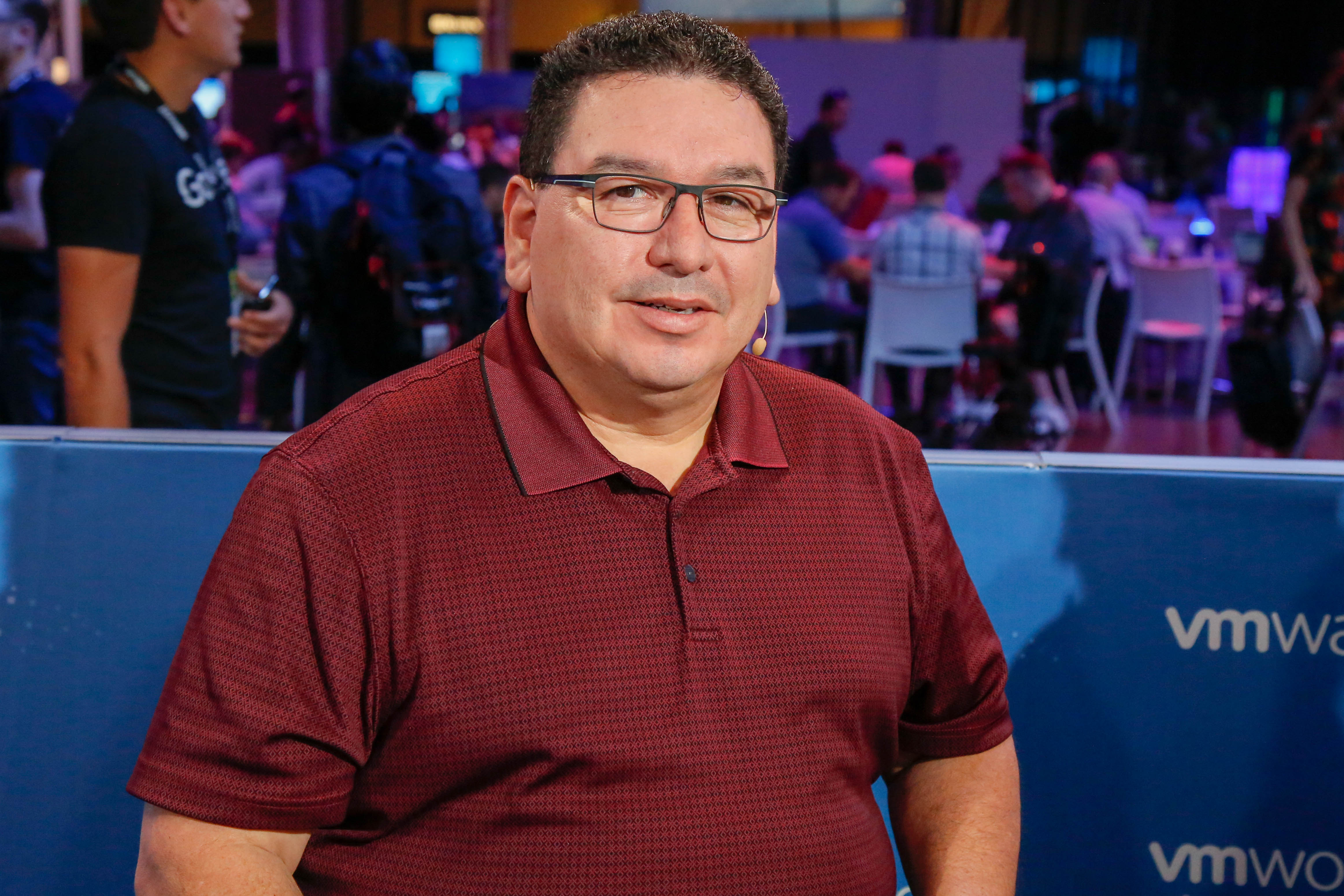 CLOUD
CLOUD
 CLOUD
CLOUD
 CLOUD
CLOUD
As more students enroll in college and study abroad, document security risks increase. Turnitin LLC, a plagiarism detection software used at universities and lower-level schooling around the U.S. and Europe, has been protecting students and universities from possible cheating scandals for 20 years. The company just uploaded its billionth paper and has an infrastructure of around nine petabytes of data, according to PJ Romero (pictured), principal information technology engineer at Turnitin.
To make the transition into the cloud, Turnitin has adopted VMware Inc. technology in order to virtualize its “rows and rows of servers,” Romero described.
“Turnitin is actually a home-grown infrastructure,” Romero said. “So it’s highly available; it’s highly redundant.” Since Turnitin runs its own data centers, it is still in the process of moving to the cloud, using technologies from Amazon Web Services Inc., and others, to make the move more efficient. “But, the main guts of [the data center] is still on-premise,” he added.
Romero spoke with Stu Miniman (@stu), host of theCUBE, SiliconANGLE Media’s mobile livestreaming studio, and guest host Joep Piscaer (@jpiscaer), during the VMworld conference in Las Vegas, Nevada. They discussed Turnitin’s migration to the cloud and the benefits of hyperconverged infrastructure and virtualization. (* Disclosure below.)
Turnitin’s on-premises infrastructure uses Nutanix Inc.’s cloud computing software and VMware virtualization technologies. Romero originally began with a three-node unit to show executives the benefits of the system. “Then we deployed our Oracle stack in no time,” he said.
Using HCI has changed the way Turnitin does business. “It’s made it cheaper and faster,” Romero said. “I give [our team] access to the dashboards and show them how things work.”
Ease of use has also made operations smoother. Romero’s focus is no longer on operational issues, but rather on architecture. In fact, the IT engineer role at Turnitin is completely changing. “I’m getting to think more. I’m not reactive anymore at all. Now [the IT environment] is more on design and how we can make sure [to] tighten up securities,” Romero described.
In the future, Turnitin would like to increase use of Nutanix and allow for more three-to-one backups, freeing up even more time for Romero to spend on future architecture. “I’m making it so we can lose any leg and we’re going to be fine,” he stated.
Watch the complete video interview below, and be sure to check out more of SiliconANGLE’s
and theCUBE’s coverage of the VMworld conference. (* Disclosure: Nutanix Inc. sponsored this segment, with additional broadcast sponsorship from VMware Inc. Nutanix, VMware, and other sponsors do not have editorial control over content on theCUBE or SiliconANGLE.)
Support our open free content by sharing and engaging with our content and community.
Where Technology Leaders Connect, Share Intelligence & Create Opportunities
SiliconANGLE Media is a recognized leader in digital media innovation serving innovative audiences and brands, bringing together cutting-edge technology, influential content, strategic insights and real-time audience engagement. As the parent company of SiliconANGLE, theCUBE Network, theCUBE Research, CUBE365, theCUBE AI and theCUBE SuperStudios — such as those established in Silicon Valley and the New York Stock Exchange (NYSE) — SiliconANGLE Media operates at the intersection of media, technology, and AI. .
Founded by tech visionaries John Furrier and Dave Vellante, SiliconANGLE Media has built a powerful ecosystem of industry-leading digital media brands, with a reach of 15+ million elite tech professionals. The company’s new, proprietary theCUBE AI Video cloud is breaking ground in audience interaction, leveraging theCUBEai.com neural network to help technology companies make data-driven decisions and stay at the forefront of industry conversations.